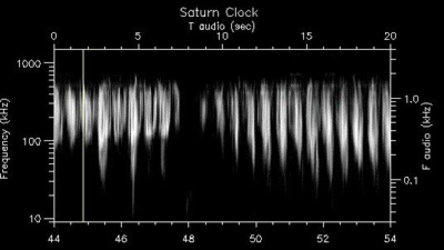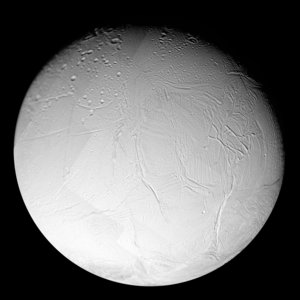Cassini-Huygens - celebrating 10 years since launch
Celebrating the 10th anniversary of its launch, the Cassini-Huygens mission to Saturn, which has made amazing discoveries routine, is once again at the centre of scientific attention.
The mission’s latest discoveries are a leading topic of conversation among nearly 1500 scientists gathered this week at the annual meeting of the American Astronomical Society’s Division of Planetary Sciences in Orlando, USA.
Cassini-Huygens rode into space on 15 October 1997, atop an american Titan IVB launcher. Its mission was to orbit and study the Saturnian system for four years and to deliver ESA’s Huygens probe that parachuted down to the frozen surface of Saturn's Earth-like moon, Titan.
Since entering orbit around Saturn, Cassini's scientific instruments, powered by radioisotope thermoelectric generators, have returned immense amounts of new information to the international team of scientists working on the mission.
Scientists aren't the only ones to benefit from this voyage of discovery. Since arriving at Saturn three-and-a-half years ago, Cassini-Huygens’ revelations have captured public imagination. Its spectacular views of Saturn and its realm have graced the covers of magazines around the world and millions have followed the mission's progress.

"With Cassini, amazing discoveries have almost become routine," says Cassini project scientist Dennis Matson of NASA's Jet Propulsion Laboratory, USA, who manages the Cassini orbiter science activities.
"Orbiting Saturn, Cassini is in the middle of the greatest natural laboratory accessible to us in space," says Matson. "With its rings, dozens of moons and magnetic environment, Saturn is like a mini-solar system, with Saturn as a stand-in for the sun, and the moons and rings like planets in formation. Through Cassini and its instruments, we are making fundamental strides in understanding the physical processes that created and govern this and other solar systems."
The Huygens team are working hard, deciphering the millions of bits of information sent back by Huygens on 14 January 2005. Scientists in Europe and around the world are recreating conditions encountered by Huygens so that they can unveil Titan’s surface.

“For all of us so closely involved in discovering an Earth-like world, it was worth the long trip. We are now learning about terrestrial-processes that take place on another world – which is fascinating. Cassini-Huygens is truly a success story in international cooperation,” comments Jean-Pierre Lebreton, ESA Huygens Project Scientist.
Some of the discoveries include ice geysers shooting from Saturn's moon Enceladus and the finding that one of Saturn's rings is created from these ice particles. Recently, scientists found that material from Enceladus is also affecting the rotation of Saturn's magnetic field. And an onboard radar instrument, which sees through clouds, has been unveiling the fascinating world of Titan, the large moon with complex chemistry and lakes of hydrocarbons.
Notes for editors:
The Cassini-Huygens mission is a cooperative project between NASA, ESA and the Italian Space Agency.
The Jet Propulsion Laboratory (JPL), a division of the California Institute of Technology, manages the Cassini-Huygens mission for NASA's Science Mission Directorate. JPL designed and assembled the Cassini orbiter. ESA developed the Huygens Titan probe, while ASI managed the development of the high-gain antenna and the other instruments of its participation. The imaging team is based at the Space Science Institute, USA.
For more information:
Jean-Pierre Lebreton, ESA Huygens Project Scientist
Email: Jean-Pierre.Lebreton @ esa.int















 Germany
Germany
 Austria
Austria
 Belgium
Belgium
 Denmark
Denmark
 Spain
Spain
 Estonia
Estonia
 Finland
Finland
 France
France
 Greece
Greece
 Hungary
Hungary
 Ireland
Ireland
 Italy
Italy
 Luxembourg
Luxembourg
 Norway
Norway
 The Netherlands
The Netherlands
 Poland
Poland
 Portugal
Portugal
 Czechia
Czechia
 Romania
Romania
 United Kingdom
United Kingdom
 Slovenia
Slovenia
 Sweden
Sweden
 Switzerland
Switzerland








































